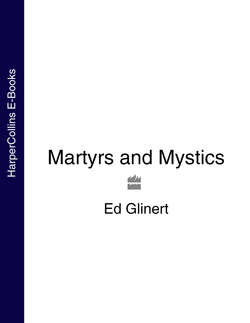Читать книгу Martyrs and Mystics - Ed Glinert - Страница 7
Key events
Оглавление| 616 | A fisherman has a vision of St Peter on Thorney Island and founds what becomes Westminster Abbey. |
| 1382 | The Archbishop of Canterbury’s council meets at Blackfriars monastery to denounce John Wycliffe’s religious doctrines and his pioneering translation of the Bible into English. |
| 1401 | The first of many martyrs to meet his death at Smithfield is William Sawtrey, priest and follower of the Bible translator John Wycliffe. |
| 1534 | Henry VIII declares himself supreme head of the English Church and orders that all references to the Pope be removed from prayer books. |
| 1535 | Thomas More, one of Henry VIII’s leading aides, is executed at Tower Hill for opposing the king’s decision to make himself head of the Church. |
| 1604 | From the Hampton Court Conference comes the greatest of all Bible translations – the King James or Authorised Version. |
| 1666 | The Fire of London destroys the City. Catholics are blamed, and a Frenchman, supposedly an agent of the Pope, is hanged (wrongly) for starting the blaze. |
| 1678 | One of the most infamous religious conspiracies in London history, the Popish Plot, unfolds after the body of Sir Edmund Berry Godfrey, a well-known Protestant, is found on Primrose Hill impaled on his own sword. |
| 1688–9 | The Bill of Rights ends the Stuart notion of the ‘Divine Right’ of kings to rule. From now on no monarch can be or marry a Catholic. |
| 1738 | John Wesley experiences an epiphany in Aldersgate that leads to the birth of a new creed: Methodism. |
| 1780 | The worst mob violence ever to hit London – the Gordon Riots – erupts on 2 June as the capital demonstrates against parliamentary attempts to grant Catholics further civil rights. |
| 1791 | The latest Catholic Relief Act gives Catholics the right to worship in public again. |
| 1865 | William Booth founds the Salvation Army after hearing two missionaries preach at an open-air meeting in the East End. |
| 1858 | The Jewish Relief Act allows Jews full civil rights, including being able to sit as MPs without having to take the Christian oath. |
| 1976 | The Jamme Masjid opens in Spitalfields – the only building in the West to have been church, synagogue and mosque. |
The Gordon Riots
London’s most violent religious disturbance was a week of mayhem in June 1780 which resulted in hundreds of deaths and the burning and looting of much of the capital in the wake of government plans to allow Catholics greater civil rights. The protest became known as the Gordon Riots because the mob was whipped into a frenzy by Lord George Gordon, head of the Protestant Association.
Two years previously, the Catholic Relief Act had been passed, banning any further persecution of Catholic priests. This followed negotiations by the government with a group of Catholic gentry who agreed to drop Stuart claims to the throne and to deny the civil jurisdiction of the Pope. Catholics were still, however, banned from holding important public posts in teaching and the army, though by 1780 the government, concerned at the depleted number of troops available to fight in the American War of Independence, considered changing the law to allow Catholics to join the army.
On Friday 2 June 1780 Parliament met to debate the proposals. When Lord Gordon failed to win approval for his anti-Catholic petition by 192 votes to 6, the mob went on the rampage. Spoiling for a fight, they headed for the only places in London where Catholics could worship openly – two chapels in Soho and Holborn. They ransacked the buildings, smashed the doors and windows, and burnt prayer books and religious artefacts in the street.
By noon the next day it appeared the disturbance was over, but at three in the afternoon soldiers escorting a group of thirteen men to Bow Street Magistrates Court were pelted with mud. In the slum district of Moorfields the houses of Irish immigrants (mostly Catholic) were attacked. As the violence continued on the Sunday, householders chalked up the warning ‘No Popery’ on their doors. The Italian parents of the clown Joseph Grimaldi daubed on their door ‘No religion’, while in the Jewish ghetto around Houndsditch houses were chalked with the words: ‘This is the home of a true Protestant.’
The following day riot leaders marched on Lord Gordon’s house in Welbeck Street, Marylebone, to bring him trophies of relics ransacked from the looted chapels. Tuesday 6 June was the worst day of mayhem. A hugh mob swarmed through Seven Dials heading for Newgate Prison. One who joined it en route was the painter-poet William Blake, who had seen the crowd from his studio window and had joined it out of curiosity. The rioters attacked the gaol with sledgehammers and pickaxes, and prisoners poured out, though some stayed put, at a loss of where to go, until the rioters set fire to the building.
Trouble continued for the rest of the week, at the end of which 285 people were dead and 200 wounded. Although Lord Gordon was charged with high treason and sent to the Tower, where he languished for eight months, he was cleared of blame. Remarkably he later forsook the Anglican Church for Judaism, changed his name to Israel Abraham George Gordon, and died at the age of forty-two in Newgate Prison where, ironically, he had been incarcerated for libelling Marie Antoinette.
